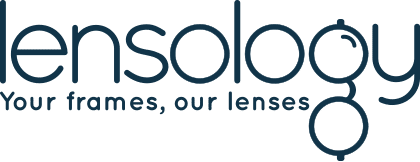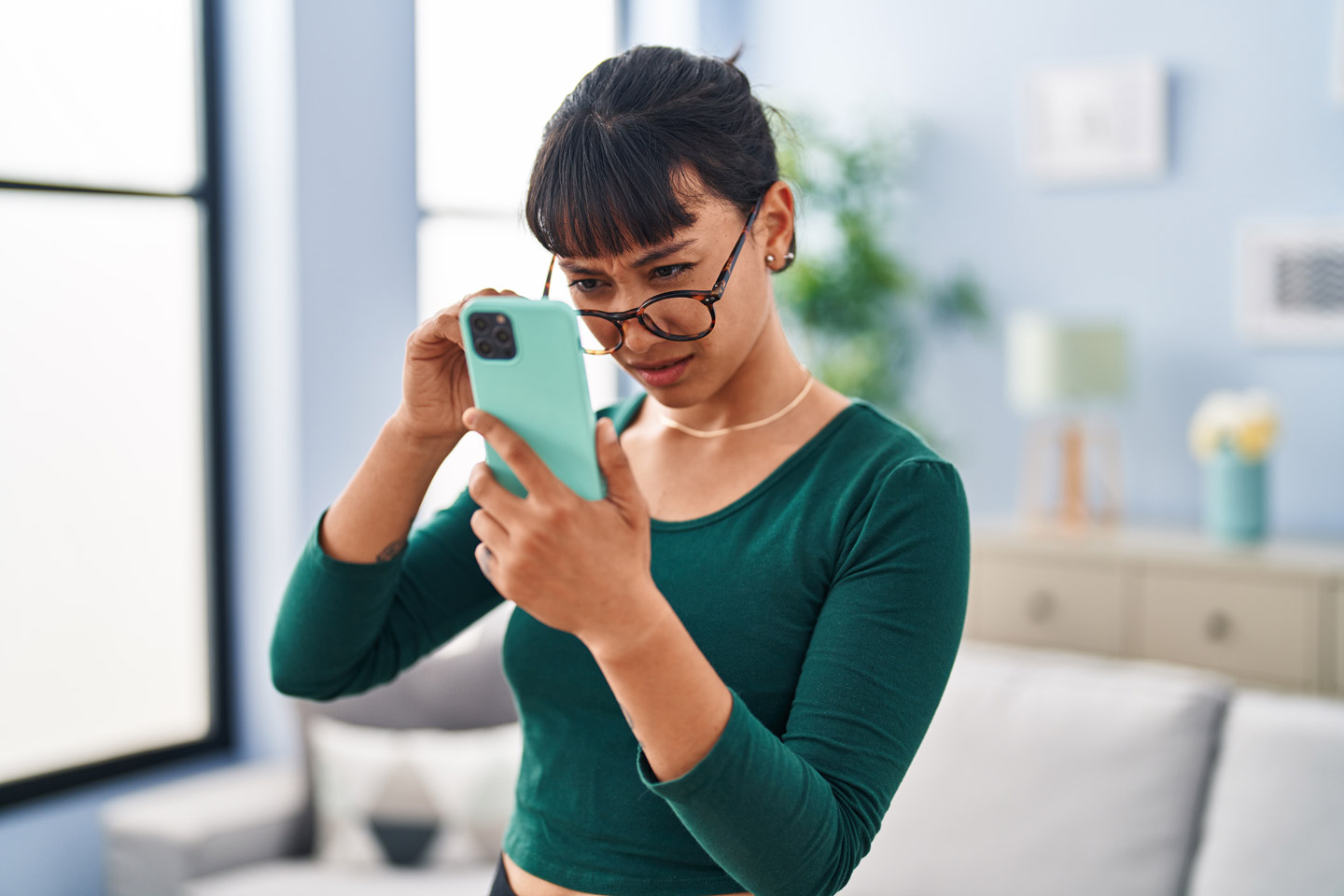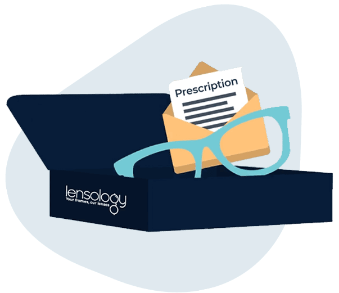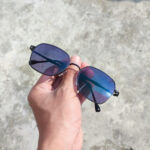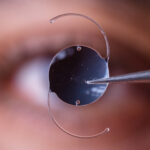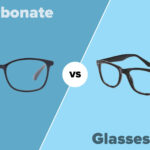Have you ever found yourself moving a book closer to your face so you can read the words? How about when you’re in a car and can’t read the upcoming roadsigns? This is the difference between Myopia and Hypermetropia, and it all comes down to how clearly you can see something at a particular distance.
Both Myopic and Hypermetropic eye conditions, or refractive errors, are where variations in your eye influence how the incoming light is focused. Ideally, light enters through your pupil and should focus directly on your retina. But if you have Myopia or Hypertropia, light is redirected, resulting in vision impairment and blurred vision
In basic terms:
Myopia = Nearsightedness – you can see items nearby more clearly, and objects far away are blurred.
Hypermetropia = Farsightedness – you can see items far away more clearly, and objects nearby are blurred.
But once you know your condition, how can you correct it? This blog looks into why we have these two eye conditions and the prescription lenses that will help perfect your vision.
What is Myopia?
If you have myopia, your eyeball is slightly elongated from front to back, or your cornea curvature is more pronounced. This means the light that enters your pupil is being forced to the front of your retina rather than directly onto it. An image is created in front of the retina – enabling a sharper focus on close-up items but a blurred view of items far away.
For myopic prescription glasses, the severity of your eye correction will be logged as minus (-) on your optical prescription, and there are several suitable prescription lenses and eyeglasses to help improve your vision.
The Best Lenses For Myopia Prescriptions
Single vision lenses
– Near-sighted, single-vision lenses are made to meet your bespoke eye prescription needs. These are full lenses which redirect the light directly onto your retina and help you see things at a distance.
Polarised lenses
– People with myopia often require glasses for activities such as driving but can then be blinded by sunlight bouncing off smooth services. Polarised lenses prevent this by blocking the sun’s glare and allowing a clear line of sight.
What is Hypermetropia (aka Hyperopia)
Hypermetropia is basically the opposite of Myopia. Hypermetropic people’s eyeballs are shorter (front to back), or their corneas are flatter. This causes incoming light to be pushed to the back, and images are created behind the retina – providing a clear view for items far away but blurring items close up.
Mild cases of hyperopia can be managed without glasses. However, over time, it can cause eye strain and other health issues from looking too closely at screens – which, let’s be honest, is now part of everyday life!
With hypermetropia prescriptions, the severity of your eye correction is documented as a positive (+) on your eye prescription, and there is a range of suitable prescription lenses and glasses to support your visual needs.
The Best Lenses For Hyperopia Prescriptions
Single vision lenses
– Single vision lenses contain your full hyperopia prescription and redirect the light coming into your eye to your retina, sharpening your focus and clarity on viewing items nearby.
Computer lenses
– For people with hypermetropia who work in offices, you’ll often look up and down from your computer or notepad. To provide consistent visual clarity, computer lenses hold your hyperopia prescription in the bottom half of the lens and clear glass at the top, allowing you to easily switch your line of sight with zero discomforts.
Blue light protection
– If you require glasses to improve your hyperopia, you are likely working with or looking at screens close up for long periods. This can be extremely harmful to your eye health, but adding a blue light protection coating to your lens reduces the amount of blue light that impacts your sight.
Myopia and Hypermetropia Combined
Some glasses wearers can suffer from both myopia and hypermetropia, sometimes with each eye holding a different level of each condition. It all comes down to the correct prescription and finding the right glasses lens to accommodate these unique visual requirements.
The Best Lenses for Myopia and Hypermetropia Prescriptions
Single vision lenses
– For those who suffer from nearsightedness and farsightedness, you may be happy with two pairs of glasses: one to support your myopia and the other to support your hypermetropia. But this will involve carrying two pairs of glasses and switching between them as and when you need to.
Bifocal Lenses
– These specialised lenses are designed to hold two different types of prescription. Essentially, they’re split, with the top half holding your myopia requirement (so you can focus on items far away) and the bottom half holding your hypermetropia requirement (so you can focus on items closeup). When combined, they provide one comfortable lens to improve your overall vision. Plus, it means you only need one pair of glasses or sunglasses!
Varifocal Lenses
– similar to bifocals, except they can hold three different prescriptions. Again, they are split with the top of the lens holding your myopia requirement, the bottom holding your hypermetropia requirement, and the middle supporting any intermediate visual requirements when completing tasks at arm’s reach (computer work, texting, etc.). And just like bifocals, varifocals consist of one lens to fit perfectly into your glasses or sunglasses.
The Solution
As you can see, Myopia and Hypermetropia eye conditions are easily resolved. So, don’t panic if you’ve been told you have one or both of these conditions. If you notice a deterioration in your eyesight, it’s important you book an optician appointment as soon as possible. With the proper eye tests, your optician will determine the best prescription for you and, therefore, the right lenses to refocus light towards your retina and correct your visual impairment.
Updating Your Optical Prescription
As we get older and depending on our type of work and lifestyle, our eyesight gradually changes. It’s essential to have regular optician appointments to keep on top of your eye health and eye prescription. If your prescription changes, don’t feel pressured into purchasing a new pair of glasses to meet your new requirements. If you already have a favourite pair of frames, here at Lensology, we can create a bespoke lens to match your new prescription requirements and fit them directly into your glasses or sunglasses frames.
What happens if I don’t have the correct eye prescription?
If you avoid regularly checking your eyesight, you can cause serious problems for both your eye and physical health. By not wearing the correct prescription lenses, you can become victim to:
- Constant squinting and, therefore, more wrinkles!
- Headaches
- Eye and neck strain
- Tiredness
- Putting yourself at risk when driving or other activities
Don’t put your eyes at risk, and make sure your glasses support your most up-to-date prescription lenses. And if they need updating, Lensology is on hand to help!
